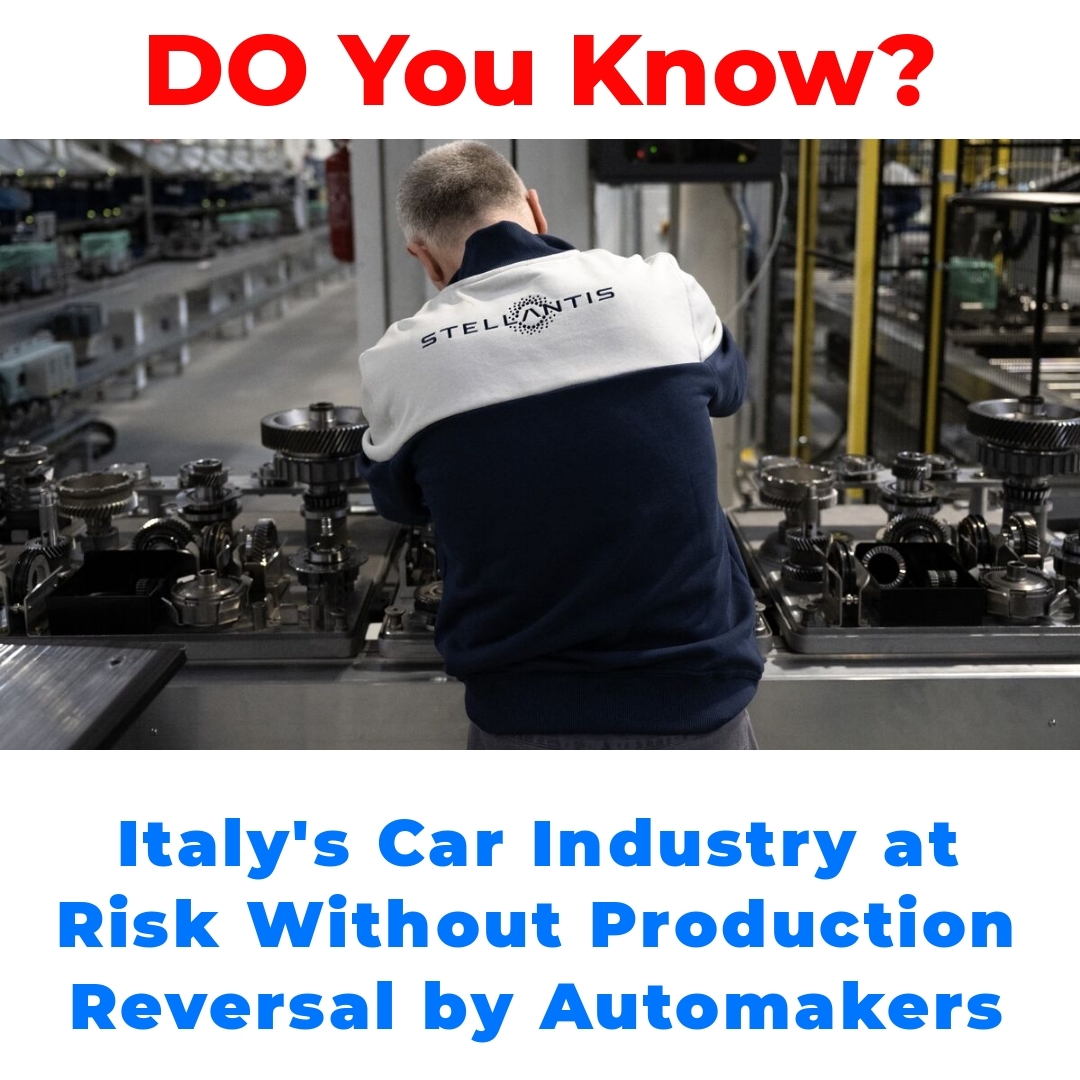The Italy car industry plays a vital role in the country’s economy, contributing significantly to employment and national income. However, it currently faces an existential threat due to declining vehicle production. This article explores recent trends, the impact on local manufacturers, and potential strategies to revive this crucial sector.

Current State of the Italy Car Industry
The Italy car industry is currently facing significant challenges. Recent statistics show a worrying trend in vehicle production. Reports indicate that many manufacturers are producing fewer cars year over year. This decline isn’t just a minor blip; it’s part of a larger pattern affecting the entire sector. As production drops, the impact on local manufacturers and the economy becomes increasingly concerning.
The decreasing numbers indicate that the Italian automotive sector may struggle to maintain its long-standing reputation for quality and craftsmanship. It raises questions about the future viability of these iconic brands and the people who work for them.
The Role of Stellantis NV
Stellantis NV plays a crucial role in this narrative as one of the largest automotive companies in the world, formed from the merger of Fiat Chrysler and PSA Group. The production trends at Stellantis in Italy are particularly important since they heavily influence the overall health of the Italy car industry. Recently, Stellantis has announced reductions in production at several plants, citing the need for restructuring in response to market demands.
Decisions made by Stellantis not only affect their own operations but also ripple through the entire Italian automotive landscape, impacting smaller manufacturers and suppliers who depend on them for business. This interconnectedness amplifies the concerns surrounding the decline in production.
Concerns Raised by the Automotive Trade Group
A prominent automotive trade group has raised alarming concerns regarding the ongoing decline in vehicle production in Italy. This group, representing many stakeholders in the automotive sector, has stressed the economic impact of reduced manufacturing. They emphasize that the slower production rate is not just a problem for the manufacturers but also affects local economies that rely on the automotive sector for jobs and business activity.
Job losses and reduced economic activity in regions where car manufacturing thrives could have catastrophic effects. These regional economies depend on the manufacturing jobs and supplier networks that the Italy car industry has historically provided. Such a decline could hurt communities that are already struggling.
Challenges Facing the Industry
Several factors contribute to the manufacturing decline within the Italy car industry. One of the major challenges is global competition. International automakers are gaining ground, offering more innovative and cost-effective vehicles. Additionally, changing consumer preferences are pushing the industry toward more sustainable and electric vehicles, adding pressure on traditional manufacturing processes.
Innovation is essential for the survival of the Italian automotive sector. Manufacturers face pressure to adopt new technologies and adapt to shifting market demands. Without embracing change, the industry may struggle to keep pace with competitors and evolving consumer needs.
Potential Solutions to Reverse Declining Production
To combat the declining production trend in the Italy car industry, manufacturers must explore various strategic initiatives. This could include reallocating resources towards research and development, focusing on electric vehicles, and engaging in partnerships for technological advancements.
Furthermore, collaboration among industry stakeholders, including Stellantis NV, is crucial. By joining forces and sharing insights, manufacturers can collectively work towards revitalizing the automotive sector. Looking at successful case studies from around the globe can provide additional strategies and inspiration for Italy’s manufacturers.
Conclusion
The challenges facing the Italy car industry signals an existential threat that cannot be ignored. It’s critical for manufacturers and trade groups to come together to address the trends affecting vehicle production. The future outlook is not entirely bleak; with proactive measures and strategic innovations, there is potential for revitalization and growth within the sector.
As we move forward, it’s vital for everyone involved in the automotive sector to stay informed about the developments and challenges within the Italy car industry. A united approach can help us discover effective solutions to reverse the decline and secure a promising future for this pivotal sector.
What are the current challenges facing the Italy car industry?
The Italy car industry is facing significant challenges including:
- Declining vehicle production year over year.
- Increased global competition from international automakers.
- Shifts in consumer preferences toward sustainable and electric vehicles.
How does Stellantis NV impact the Italy car industry?
Stellantis NV, formed from the merger of Fiat Chrysler and PSA Group, plays a crucial role by:
- Influencing production trends in Italy.
- Announcing production reductions at several plants, which signals restructuring.
- Affecting smaller manufacturers and suppliers through its operational decisions.
What concerns have been raised by the automotive trade group?
A leading automotive trade group has raised concerns such as:
- The economic impact of reduced vehicle manufacturing.
- Potential job losses in regions dependent on automotive production.
- The threat to local economies that rely heavily on the automotive sector.
What are the main factors contributing to the decline in production?
Several key factors are contributing to this decline, including:
- Intense global competition.
- Changing consumer demands for more innovative and efficient vehicles.
- Need for adaptation towards electric and sustainable manufacturing practices.
What potential solutions are being discussed to reverse the decline?
To combat declining production, the following strategies can be considered:
- Investing in research and development, particularly for electric vehicles.
- Building partnerships for technological advancements across the industry.
- Collaborative efforts among manufacturers to share insights and resources.





